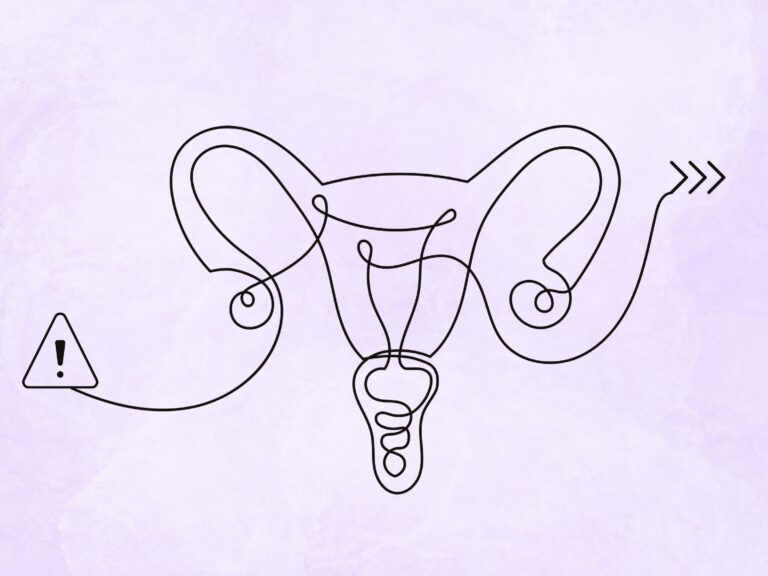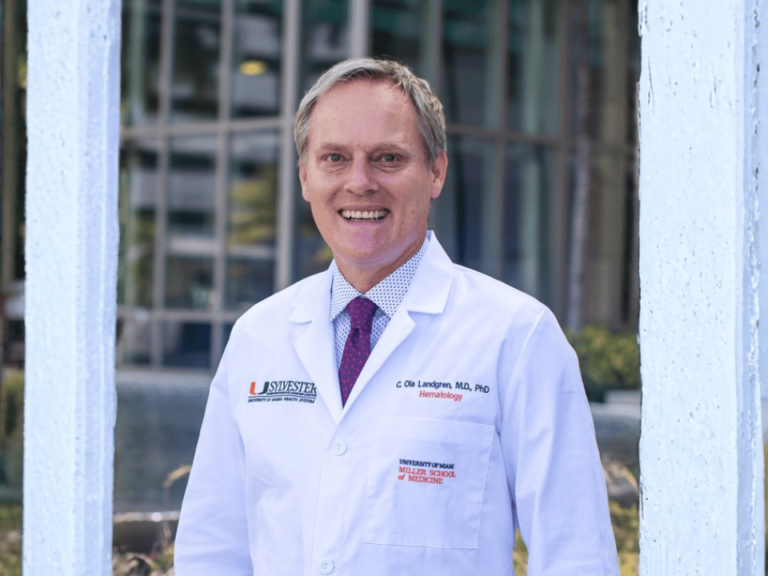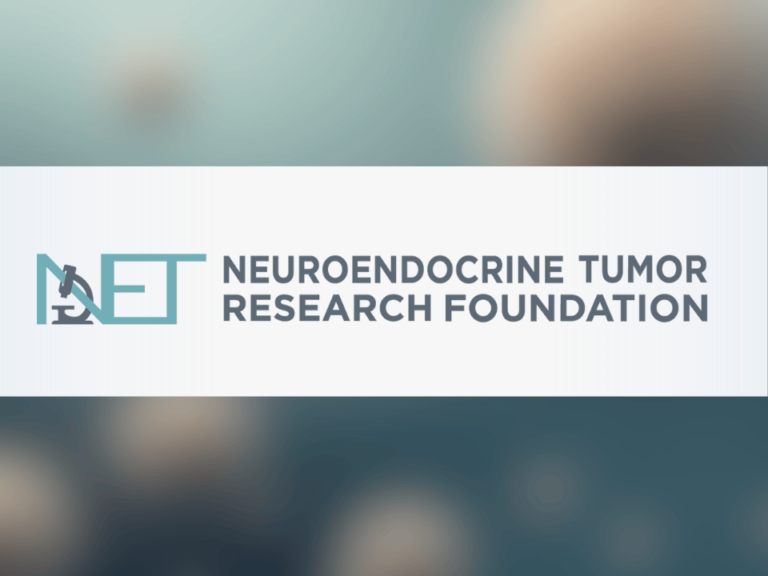This story is part of The Cancer Letter’s ongoing coverage of COVID-19’s impact on oncology. A full list of our coverage, as well as the latest meeting cancellations, is available here.
In March, as SARS-CoV-2 spread rapidly across the United States, cancer researchers scrambled to find clues about the virus and ways to mitigate its damage.
Earlier this week, at the annual meeting II of the American Society for Cancer Research, several of these SARS-CoV-2 researchers presented their findings about the immune system’s response to the novel coronavirus.
Here are the highlights of their presentations:
There may be crossover between immunity of SARS-CoV-2 and immunity to the seasonal coronavirus,
Immune and clinical heterogeneity is high in COVID-19 hospitalized patients,
High levels of inflammatory cytokines at diagnosis correlate with poor survival,
In ICU patients with COVID-19, T cells appear to lose the ability to differentiate, and stay in the naive phenotype,
The best predictor of severe COVID-19 is a rise in serum levels of calprotectin and early loss of non classical monocytes.
These presentations built on earlier results, presented at the AACR annual meeting I, which was held in April (The Cancer Letter, May 1, 2020).
Addressing the session on COVID-19, NIH Director Francis S. Collins warned that delayed breast and colorectal cancer diagnoses and treatment will result in higher mortality rates down the line (The Cancer Letter, June 19, 2020).
“That is deeply troubling. That is a consequence of what has happened because of this pandemic—these are not deaths that are going to be counted as directly due to the virus, but in a certain way—they are,” Collins said. “We have to do everything that we possibly can now things are starting to open up, to catch up, and to make sure that those folks who have waited don’t keep on waiting any longer.”
Collins presented an overview of NCI’s COVID-19 in Cancer Patients Study (NCCAPS), which aims to assess how COVID-19 has affected people with cancer who test positive for COVID-19.
“The idea is to try to study how this may disrupt cancer-directed therapy, what the long-term outcomes might be, and how this might guide future care for people who acquire this illness,” Collins said.
Goals of the study are to:
Enroll a large cohort of patients undergoing cancer therapy who test positive for SARS-CoV-2 to characterize factors associated with COVID-19 severity.
Describe modifications to cancer treatment made due to COVID-19.
Evaluate association of COVID-19 with cancer outcomes in clinico-pathologic subgroups,
Assess anti-SARS-CoV-2 antibody development, cytokine abnormalities, genetic polymorphisms associated with severe COVID-19,
Create bank of clinical data, research blood specimens, radiological images for future research.
“This is going to be a very important study to try to understand the interaction between a very common disease—cancer—and a very unexpected global pandemic of COVID-19.”
From NIH
Over the past 9 weeks, Frederick National Lab received more than 130 commercial assays for validation—“most of the tests that they looked at weren’t bad at all,” Collins said.
“They were very well set up to be able to do validation of various commercial serology tests that were beginning to hit the market, and where FDA really needed some help assessing the performance of these,” Collins said.


However, it’s not known whether testing antibody-positive is associated with protection against reinfection, which antibody levels are associated with reinfection, or how long protection will last.
“In a few more months, we will know the answer to that, but let nobody try to tell you that ‘OK, I have antibodies, so I’m now completely safe. I don’t have to wear a mask. I don’t have to worry about getting exposed again,’” Collins said. “We don’t know that yet.”
In addition to NCI’s serology and NCAPPS efforts, NIH has been investigating COVID-19 on three fronts: Accelerating COVID-19 Therapeutic Interventions and Vaccines (ACTIV), a public-private collaboration, Warp Speed, which acts as oversight for ACTIV, and diagnostics research.
“What we try to do is bring the best and brightest scientists from all sectors around the same table, design what needs to be done, and then step forward, holding ourselves accountable to meet milestones,” NIH Director Francis S. Collins said during the session.
ACTIV is made up of four working groups, each co-chaired by a member of industry and NIH:
Preclinical
Therapeutics clinical
Clinical capacity
Vaccines


ACTIV consists of leaders from FDA, CDC, Department of Defense, Veterans Administration, multiple institutes at NIH, Biomedical Advanced Research and Development Authority and 12 pharmaceutical companies.
Even though this is a breathtaking time table, it might actually be achievable that we would have, by the fall, these kinds of new technologies that are usable, point-of-care, affordable, and give an answer in a big hurry.
Warp Speed, a government initiative, is overseeing ACTIV. Also, NIH has established the Rapid Acceleration of Diagnostics (RADx) Initiative to address the need for rapid diagnostic testing of COVID-19 in the U.S.
“The area where people are most urgently needing to see the expansion of diagnostics is the detection of the virus,” Collins said. “About 500 applications have already come forward. Something over 10% of those have now gone into this phase 0 shark tank to see how they look. And some of those have now already graduated that into phase I, and phase II, where there’s a real scale-up, is not far away.”
Collins expects there to be widespread diagnostic, point-of-care testing by the fall.
“Even though this is a breathtaking time table, it might actually be achievable that we would have, by the fall, these kinds of new technologies that are usable, point-of-care, affordable, and give an answer in a big hurry,” Collins said. “It is an engineer’s dream to have this kind of innovative effort all thrown together to see what comes out of it.”
Other aspects of RADx address diagnostics in underserved populations, novel applications, scale-up of technologies, an infrastructure building for data management of COVID-19 efforts.


“You can’t look around right now and not be heartbroken when you see the way in which COVID-19 has particularly hit hard those same populations that have already been suffering from health disparities—individuals who are elderly but with chronic illnesses, and particularly those in lower socioeconomic status communities, African Americans, Hispanics—all of those individuals paying a much higher price for the serious illness part of this disease,” Collins said. “One of those reasons is a lack of access to testing in those communities.”
Research presented at the meeting
Distinguishing pre-existing and de novo antibody responses to SARS-CoV-2 is critical for serology, seroprevalence and vaccine studies, George Kassiotis, senior group leader and head of the laboratory of Retroviral Immunology at the Francis Crick Institute, London, said during the session.
Kassiotis, professor of retrovirology in the Department of Medicine, Imperial College London, sought to answer whether the introduction of SARS-CoV-2 in the human population, acquired in the absence of preexisting immunity, has an effect on symptoms of SARS-CoV-2.


Kassiotis presented data during his talk, titled “pre-existing and de novo humoral immunity to SARS-CoV-2 in humans,” that suggest cross-reactive activity in SARS-CoV-2 and seasonal coronaviruses.
“The potential consequences of preexisting immunity for the course of SARS-CoV-2, or susceptibility to coronaviruses, are not yet fully known,” he said.
The data show that:
SARS-CoV-2 cross-reactive bodies are detected in sera from uninfected individuals,
Targeting predominantly of S2 might not interfere with S1 binding to the cellular receptor ACE2,
S-2 binding neutralizing antibodies have been described,
There may be alternative entry modes for SARS-CoV-2, such as the CD147 alternative receptor, or receptor independent entry.
“The public health measures intended to prevent the spread of SARS-CoV-2 will also prevent the spread—and consequently, maintain herd immunity to seasonal coronaviruses,” Kassiotis said. “It is therefore imperative that any effects, positive or negative, of preexisting seasonal coronaviruses immunity on the measured course of SARS-CoV-2 infection is fully delineated.”
Immune health profiling of COVID-19
Researchers at the University of Pennsylvania wanted to find out what a typical immune response in hospitalized COVID-19 patients looks like.
“What we wanted to do was try to understand the relationship of the immune response or the immune system to this respiratory viral infection,” E. John Wherry, chair of the Department of Systems Pharmacology and Translational Therapeutics, Richard and Barbara Schiffrin President’s Distinguished Professor, and director, of the Institute for Immunology, University of Pennsylvania, said during the session.


To answer this, Penn researchers built a translational immunology profiling pipeline that allowed them to obtain samples from 140-150 hospitalized COVID-19 patients, 70 healthy controls, and 50 recovered patients. Pediatric and cancer cohorts are being developed.
The study sought to address three questions:
What type of immune response exists in COVID-19 patients?
Are there common pathways of immune activation or response?
How do immune responses relate to clinical failures of disease?
Here’s what they found:
Immune and clinical heterogeneity is high in COVID-19 hospitalized patients,
There’s a C8 biased lymphopenia that’s somewhat unusual, and typical in severe viral infections,
A massive plasmablast response rivals acute ebola and Dengue fever,
A surprisingly stable T and PB responses over time,
Three immunotypes defined by different immune features that are linked to clinical presentations—one of which is linked to high-levels of inflammation and inflammatory diseases,
Links between immunotypes and clinical features might suggest ways to tailor different immune interventions to have the most effect on patients who have a certain type of immune response, such as suppressing versus activating the immune system.
Pathogenic inflammation in COVID-19 patients
New York was the epicenter of COVID-19 cases this spring, and accounted for one third of total cases in the U.S. Mount Sinai Health System in New York City had 6,936 patients with COVID-19 hospitalized there from Feb. 27-June 5.
Many COVID-19 deaths are associated with severe inflammation and embolic complications.
The focus of the Mount Sinai Immunology group has been to predict, prevent and treat pathogenic inflammation to reduce the COVID-19 death toll while waiting for curative and preventative therapies to become available, Miriam Merad, Mount Sinai Endowed professor in Cancer Immunology and the director of the Precision Immunology Institute at Mount Sinai School of Medicine, said in her talk.
Researchers at Mount Sinai, led by Merad, redeployed the hospital’s Humane Immune Monitoring Center to serve the COVID-19 research effort with two goals in mind.
“The first was to a establish a rapid cytokine test to predict pathogenic inflammation, and also to build a longitudinal collection of COVID-19 biospecimens to identify immune correlates of disease severity and identify rationale-based immunotherapy strategies,” Merad, who also co-leads the Cancer Immunology program at The Mount Sinai Tisch Cancer Institute and is the director of the Mount Sinai Human Immune Monitoring Center, said.
To assess pathogenic inflammation, researchers used a rapid cytokine test to evaluate 1,484 COVID-19 patients on their first day of hospitalization. They repeated tests on 218 patients and ended up with 1,959 samples.


Here’s what they found:
Inflammatory cytokines are elevated in COVID-19 patients on the day of hospitalization,
High levels of inflammatory cytokines at diagnosis correlate with poor survival,
High IL-6 and TNF-a levels are independent predictors of poor disease outcome that can help stratify patients and maximize response to immunomodulatory treatment,
The cytokine combination blockade could benefit a subset of patients,
Cytokine levels remain stable throughout the disease course.
The next component for the researchers was to establish a longitudinal biospecimen workflow.
“We had to build a research collection, which was not simple to do during a pandemic,” Merad said.
Researchers evaluated the following cohorts:
Hospitalized patients (700),
Clinical trials,
Children,
Convalescent (ongoing),
Health care workers (ongoing, with a goal of 200).
In the hospitalized cohort, researchers collected more than 500 COVID-19 patients, and 200 who were hospitalized at the same time, unrelated to COVID-19.
Conclusions are:
COVID-19 is a very heterogeneous disease, and large-scale cohorts can help inform disease pathogenesis,
COVID-19 patients express different inflammation patterns,
Patients with severe disease have high or low systemic inflammation,
Patients with moderate disease have a strong T cell priming signature and lack a tissue damage signature,
Inflammatory patterns are fixed during the disease course, suggesting distinct pathogenesis,
It’s important to continue to map deep molecular mapping of inflammatory patterns, unravel disease pathogenesis, stratify patients, and guide therapeutic strategy,
It’s important to measure the impact of inflammatory signatures on the quality and sustainability of the viral specific response, and potentially the susceptibility to reinfection.
T cell responses to COVID-19
A study by the Institutes for Systems Biology and Swedish Medical Center explores how T cells responses differ in COVID-19 patients. James R. Heath, president and professor at Institute for Systems Biology, presented the study.
The study includes 200 patients, who were enrolled beginning at the end of March. The study is evaluating 90 patients in the hospital and 10 outpatients. The researchers have collected 170 blood draws, with 4,000 vials of serum or PBMCs in the ISB COVID-19 biobank.


“If you compare a healthy patient cohort—these seven healthy patients we have here—you’ll see a mixture of naive and effector T cells,” Heath said. “For non ICU patients, you’d largely see effector T cells. The ICU patients—by and large the T cells appear to have largely lost the ability to differentiate, and they stay in the naive phenotype.”
For patients who don’t receive IL-6 inhibitors, there will be an increase of the effector phenotype over time, Heath said. For the IL-6 inhibitor patients, there will be an emergence of antigen-specific naive T cells that are of a protective memory phenotype.
“The IL-6 inhibitor is more or less saying, at least from the point of view of these T cells, that the infection is over, but keep on the lookout for more virus when it comes,” Heath said.
The takeaways?
“If one patient has antigens of T cells, generally the other patients will as well. These are truly immuno-dominant-type antigens,” Heath said. “The time dependence of these populations—in this patient they all go up over time, but in [this] patient they’re all decreasing all the time—that also seems to be something that’s consistently observed.”
The most immuno-dominant antigen comes out of the receptor binding domain, Heath said.
“In the near future, we’ll have some insights into how the different parts of the protein—not just generate different T cell populations—but how they can play a role in the immunoprotection of the patient against the virus,” Heath said.
Elevated calprotein and abnormal myeloid cell subsets characterize severe COVID-19
The ONCOVID protocol at Institut Gustave Roussy aims to analyze the incidence, prevalence and severity of COVID 19 in 500 french individuals.
“At this stage, it’s not clear whether cancer as such is an independent risk factor for severe COVID-19, or whether cancer-associated comorbidities will actually account for COVID outcomes in cancer patients,” Laurence Zitvogel, head of the laboratory of pneumology and cancer immunotherapy at Institut Gustave Roussy, said in her talk.
There have been 178 cancer patients treated for COVID-19 at Gustave Roussy.


A total of 75% of cancer patients with COVID-19 were hospitalized, 26% clinically worsened, and 17% died. Increased risk of death was associated with aging, smoking, an ECOG Score higher than 2, metastatic disease, and use of cytotoxic therapies in the past 3 months. An ECOG Score higher than 2 was the strongest indicator of clinical worsening and death, Zitvogel said.
Researchers analyzed whether immune parameters could predict the switch from mild to severe COVID-19 in non-cancer patients.
The researchers concluded that immature neutrophils harboring an immunosuppressive fingerprint (NF-KB, ROS, NOS, IL-1R) secreting high levels of alarmins S100A8/A9 are associated with a switch from mild to severe COVID-19.
The idea is to try to study how this may disrupt cancer-directed therapy, what the long-term outcomes might be, and how this might guide future care for people who acquire this illness.
This poor prognosis is associated with an early loss of non-classical monocytes and a downregulation of DR and CD169 expressing classical monocytes, Zitvogel said.
“This conjecture was not observed in mild disease where type I interferon prevailed, and where circulating neutrophils and monocytes express SIGLEC1/CD169 and maintain the non-classical CD16high CD14 INT monocyte subset,” Zitvogel said.
The best predictor of severe COVID-19 is a rise in serum levels of calprotectin and early loss of non-classical monocytes, she said.












